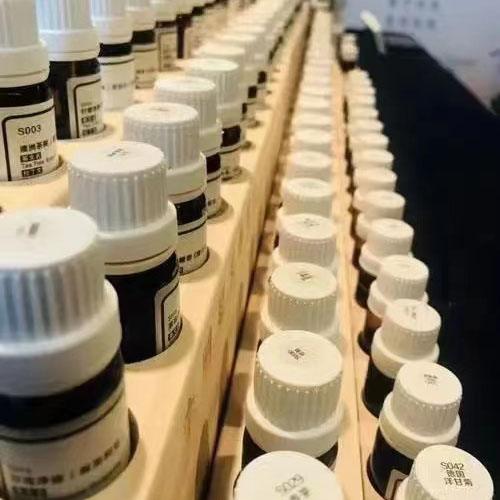- English
- Español
- Português
- русский
- Français
- 日本語
- Deutsch
- tiếng Việt
- Italiano
- Nederlands
- ภาษาไทย
- Polski
- 한국어
- Svenska
- magyar
- Malay
- বাংলা ভাষার
- Dansk
- Suomi
- हिन्दी
- Pilipino
- Türkçe
- Gaeilge
- العربية
- Indonesia
- Norsk
- تمل
- český
- ελληνικά
- український
- Javanese
- فارسی
- தமிழ்
- తెలుగు
- नेपाली
- Burmese
- български
- ລາວ
- Latine
- Қазақша
- Euskal
- Azərbaycan
- Slovenský jazyk
- Македонски
- Lietuvos
- Eesti Keel
- Română
- Slovenski
- मराठी
- Srpski језик
What Are the Trends and Future Prospects for the Natural Isobutanol Market?
2024-09-27

What are the main uses of natural isobutanol?
Natural isobutanol is used for a variety of applications. It is commonly used as a solvent in paints, coatings, inks, and other industrial applications. It is also used as a raw material for producing isobutyl acetate, which is used as a flavor and fragrance ingredient. In addition, it is used to manufacture other chemicals, such as isobutyraldehyde and isobutyric acid. Moreover, it can be used as a fuel additive and as a feedstock for producing aviation fuels.
What are the production methods of natural isobutanol?
Natural isobutanol is mainly produced using petrochemical processes. Isobutene, a by-product of petroleum refining, reacts with synthesis gas (CO and H2) to produce isobutyraldehyde, which is then hydrogenated to produce natural isobutanol. Alternative production methods include the conversion of renewable biomass resources, such as corn or sugarcane, through fermentation processes.
What are the trends and future prospects for the natural isobutanol market?
The market for natural isobutanol is expected to grow steadily in the coming years, due to the increasing demand for solvents and raw materials in various applications. There is also a growing interest in using renewable biomass resources for producing chemicals, which could further drive the demand for natural isobutanol. However, the market is also facing challenges, such as the volatility of raw material prices and the increasing competition from alternative chemicals.
In summary, natural isobutanol is a versatile chemical with a wide range of applications in the chemical industry. Its main uses include serving as a solvent, raw material for the production of other chemicals, and fuel additive. The market for natural isobutanol is expected to grow in the coming years, but it is also facing challenges such as raw material price volatility and competition from alternative chemicals.
Kunshan Odowell Co.,Ltd. is a leading manufacturer of natural isobutanol and other chemicals. We are committed to providing high-quality products and excellent customer service. For more information about our products and services, please visit our website at https://www.odowell-biotech.com. For any inquiries or questions, please contact us at Shirleyxu@odowell.com.
Scientific Papers
The following are ten scientific papers related to natural isobutanol:
1. Chen, J., Wei, P., Jing, L., et al. (2020). "Enhancement of natural isobutanol production in Escherichia coli by metabolic engineering and adaptive evolution." Journal of Industrial Microbiology & Biotechnology, 47(11), 991-998.
2. Du, X., Ji, X., Jiang, C., et al. (2019). "Conversion of lignocellulosic biomass to natural isobutanol: A review." Renewable & Sustainable Energy Reviews, 114, 1-12.
3. Xiong, M., Chen, X., & Zhou, Y. (2018). "A review of natural isobutanol production via acetone-butanol-ethanol fermentation." Brazilian Journal of Microbiology, 49(Suppl 1), 30-40.
4. Wu, Y., Zhang, J., & Li, Y. (2017). "Hydrogenation of isobutyraldehyde to natural isobutanol over Ni-Co bimetallic catalysts: Effect of Co/Ni ratio." Chemical Engineering Journal, 313, 788-797.
5. Yu, H., Xu, G., Zhang, Y., et al. (2016). "Effects of fermentation conditions on natural isobutanol production by Clostridium beijerinckii CAU-H01." Bioresource Technology, 220, 424-431.
6. Borman, P., Harvey, B. G., McEwen, J. E., et al. (2015). "Natural isobutanol: Expanding the product platform of microbial production." Metabolic Engineering, 31, 1-14.
7. Zhang, X., Wang, X., Yu, X., et al. (2014). "Effects of feed rate on natural isobutanol production by the engineered E. coli strain." Bioprocess and Biosystems Engineering, 37(12), 2463-2471.
8. Bai, F., Sandoval, N. R., Shulami, S., et al. (2013). "A sustainable process for natural isobutanol production utilizing engineered Escherichia coli." Biotechnology for Biofuels, 6(1), 72.
9. Simons, K. A., Wertish, C. A., & Hausner, M. (2012). "Natural isobutanol production from biomass: A review." Journal of Sustainable Bioenergy Systems, 2(4), 144-154.
10. Li, S., Li, Y., Chen, C., et al. (2011). "Enhanced production of natural isobutanol by engineered Escherichia coli strains." Journal of Biotechnology, 155(1), 15-22.



